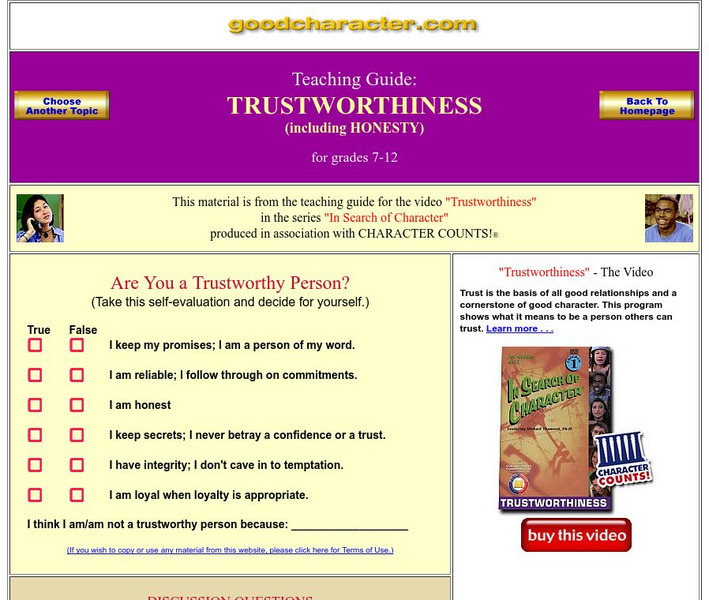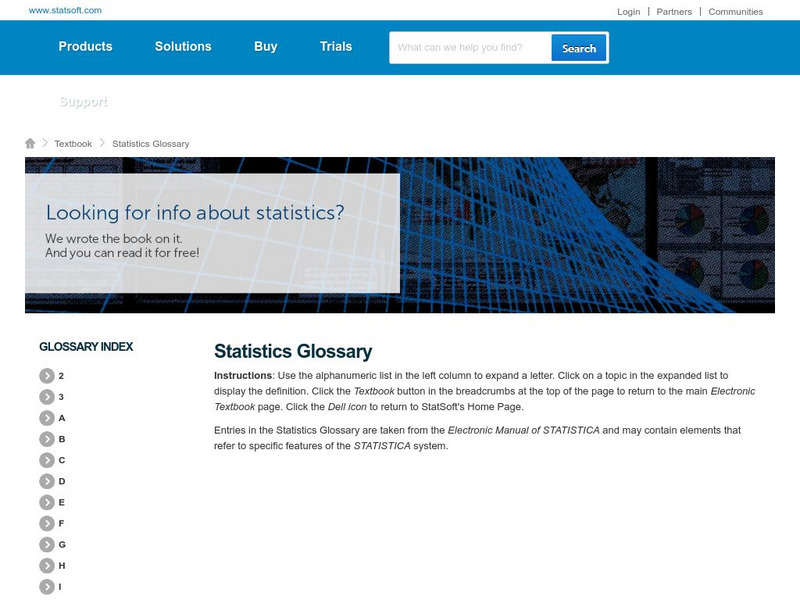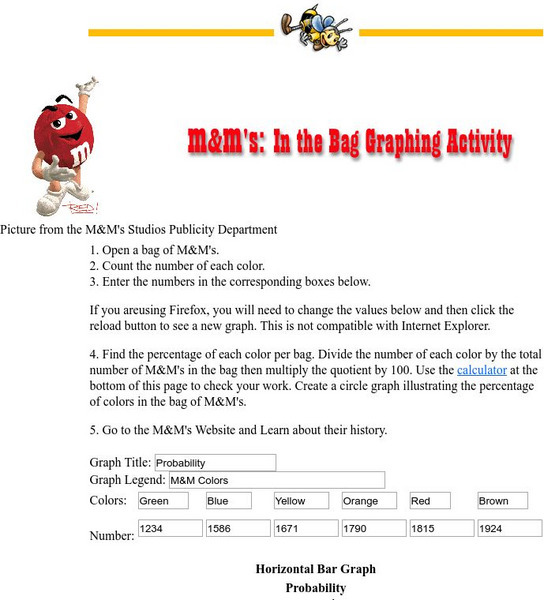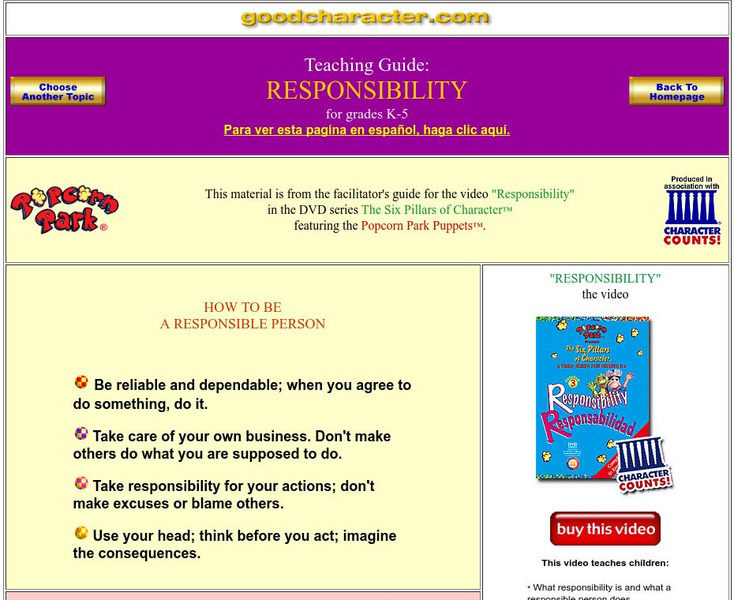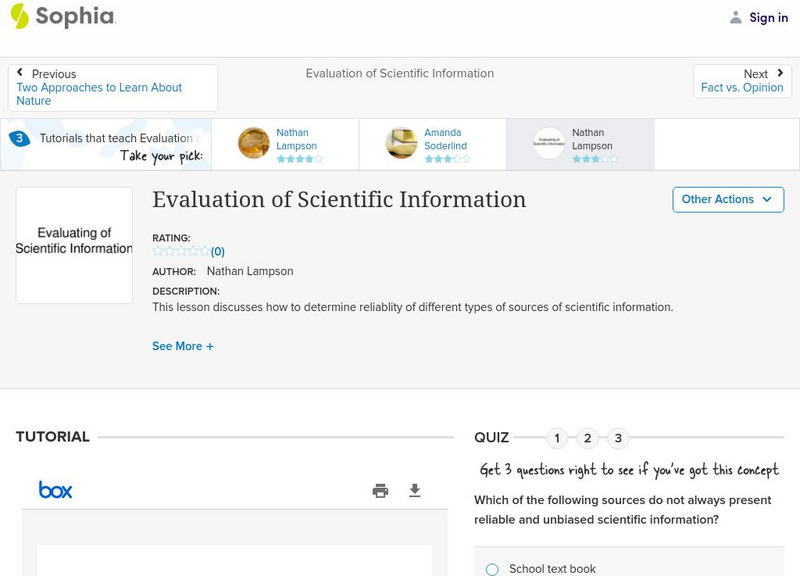Curated OER
The Mystery of History-Original Sources
Students research the events surrounding the Alamo in 1863, and explore the differences between primary and secondary sources of information. They brainstorm lists of items used to research a subject and categorize them as primary or...
Curated OER
Intelligence
In this psychology worksheet, learners answer 10 multiple choice questions related to intelligence, IQ and heritability of certain traits.
Curated OER
HOW TO EVALUATE THE TRUSTWORTHINESS OF CONTENT-ORIENTED WEB SITES.
Students objectively learn how critically evaluate Web sites for utility, trust, and reliability. In this lesson, students learn that some Web sites might be deceiving in their intent despite their popularity.
Other
Seymour Community School District: 10 Rhetorical Devices [Pdf]
A slideshow discussing ten rhetorical devices, with links to examples, in-depth information, and a video. Covers logos, ethos, pathos, analogy, metaphor, irony, personification, rhetorical question, tricolon, and maxims. Presents a...
Live Wire Media
Good Character: Trustworthiness
Material at this website is meant to accompany a video in the "In Search of Character" series. However, a self-evaluation quiz, definition of "Trust," discussion questions, writing assignments, and activity ideas can be used with...
Live Wire Media
Good Character: The Six Pillars of Character: Trustworthiness
How can you be trustworthy? Find simple ways to be a trustworthy person, discussion questions, and activity ideas. This website accompanies a video from "The Six Pillars of Character" video series, but can be used by itself or as part of...
ArtsNow
Arts Now Learning: Exercising Character: Trustworthiness [Pdf]
Help students understand the work ethic, and character trait of trustworthiness. Includes material for young students, lesson ideas for teachers of young children complete with hands-on exercises.
Other
Stat Soft: Statistics Glossary
Dozens of statistical terms are defined and illustrated in this glossary.
ReadWriteThink
Read Write Think: Hoax/no Hoax? Online Comprehension and Evaluation Strategies
Students use research-based comprehension strategies to read and evaluate websites, and practice analysis by comparing hoax and real websites and by identifying false or misleading information. SL.11-12.2 Eval&Integrate sources
Sophia Learning
Sophia: Supporting Details: Facts and Statistics
This lesson discusses how statistics can be used as supporting details. This tutorial shares a short audio lesson [05:16] and supplemental notes with the lesson's content.
Other
Pare: The Case for Authentic Assessment
What is authentic assessment? This article makes the case for authentic assessment. Come and learn more about what makes up this type of assessment.
Childnet
Childnet: Online Safety: Get Answers
Got questions about how to stay safe online and what to do when things go wrong? Get answers here! It includes questions concerning cyberbullying, meeting people from online, online gaming, time spent online, what does the report button...
Cyberbee
Cyberbee: M&ms in the Bag Graphing Activity
Use a bag of M&Ms to learn about probability. Includes graphs and percentages, and the steps needed for the students to duplicate the numbers.
Live Wire Media
Good Character: The Six Pillars of Character: Responsibility
Learn how to be responsible with simple tips, discussion questions, and activity ideas. This website, meant to accompany a video on respect, is a good resource for young children who are learning about respect in school and at home.
Live Wire Media
Good Character: The Six Pillars of Character: Responsibility (Spanish)
Learn how to be responsible with simple tips, discussion questions, and activity ideas. The Spanish version of this website, meant to accompany a video on respect, is a good resource for young children who are learning about respect in...
The Math League
The Math League: Decimals in Measurement
This site gives information on the metric system, as well as abbreviations for metric conversion.
Sophia Learning
Sophia: Evaluation of Scientific Information: Lesson 2
This lesson discusses how to determine reliablity of different types of sources of scientific information. It is 2 of 3 in the series titled "Evaluation of Scientific Information."
Sophia Learning
Sophia: Evaluation of Scientific Information: Lesson 3
This lesson discusses how to determine reliablity of different types of sources of scientific information. It is 3 of 3 in the series titled "Evaluation of Scientific Information."
Other
Bowling Green St Univ: Listing the Sample Space
This site from Bowling Green State University defines all possible outcomes (the sample space). Understanding the possible outcomes makes assigning probabilities to different outcomes easier. Several quick examples are provided for the...


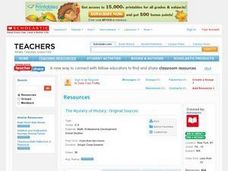


![Seymour Community School District: 10 Rhetorical Devices [Pdf] PPT Seymour Community School District: 10 Rhetorical Devices [Pdf] PPT](https://d15y2dacu3jp90.cloudfront.net/images/attachment_defaults/resource/large/FPO-knovation.png)
